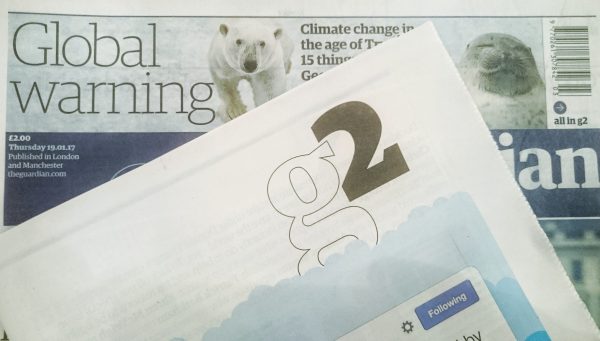A global rise in temperature of just 2°C would be enough to threaten life as we know it. But leading climate scientists think even this universally agreed target will be missed. Could dramatic action help? The New Weather Institute teamed up with The Guardian to take a look at where things are on our warming planet…
It all seemed so simple in 2008. All we had was financial collapse, a cripplingly high oil price and global crop failures due to extreme weather events. In addition, my climate scientist colleague Dr Viki Johnson and I worked out that we had about 100 months before it would no longer be “likely” that global average surface temperatures could be held below a 2C rise, compared with pre-industrial times…
Read the full, long article in The Guardian by clicking here.
Also in the paper, but not online is this thumbnail guide to the types of impact we are already seeing and can expect to come:
What happens as the planet warms?
1°C rise – where we are now
Incremental warming of the atmosphere will see a continual worsening of some impacts of climate change that are being felt now. As noted, with the current approximate 1°C of warming, we’ve already observed melting ice, sea level rise, worsening heat waves and other extreme weather events, the disruption of plant and animal species on land and in the sea and outright extinctions, the disturbance of water supplies and food production, land loss, human displacement and increased vulnerability especially among people in poverty in low income countries. Each additional degree of warming is expected to worsen these trends but climate scientists warn of inevitable surprises and so-called non-linear, or ‘runaway’ events that are hard to predict. The paleo climate record shows that temperatures can flip abruptly, by far more than the range shown here and in a decade or less.
The US corn belt, for example, is expected to lose 11 percent of production for every degree of warming, and between a 200 – 400 percent increase in the area set ablaze by wildfires in parts of the western United States according to the National Academies. The problem’s non-linearity, however, is revealed by expectations on one hand that each degree of warming translates into a 15 percent loss in annual average Arctic sea ice, but the contention by some climate scientists, like James Hansen, that a 2°C rise commits us to an ice-free Arctic and huge long-term sea level rise.
2°C rise – where we’re headed
There is a spreading of areas of the world prone to a high danger of forest fire to include parts of South and North America, southern and east Africa, the Sahel and eastern Australia. Semi-arid and tropical regions and places where farming is marginal see food production hit negatively, increased droughts in southern Africa and the Mediterranean, peak temperatures during already lethal heatwaves could be 6°C higher in Europe and 4°C in China. Glaciers continue to melt and the extent of sea ice reduces with ocean levels rising by 40cm by 2100 but with much more sea level rise potentially locked in.
3°C rise
Extreme weather events – droughts and storms – become yet more extreme with more intense dry spells and heavier rainfall – both even more damaging to food production. The dangers of sea level rise increase due both to the thermal expansion of the oceans and the release of more water into them from the Arctic and Antarctica. It won’t happen overnight, but the last time temperatures were 3°C higher sea levels were 20 metres above where they are now. A 3°C world sees still more people displaced internally and across borders increasing political tensions around the issue of ‘climate refugees.’ Further intensification of urban heatwaves makes life unbearable in cities where heatwaves are already associated with seasonal spikes in premature deaths.
4°C rise
The growth of all major cereal crops in all major global regions where they are grown is cut significantly. Yields of wheat and maize grown in low latitudes are expected to drop by 40 percent, and rice yields by around one third in China and India. The impact of changed rainfall patterns on rivers means an extra billion people suffer significantly worse access to drinking water, and 150 million more people per year suffer flooding. Temperatures could spike 8°C higher in Europe on hottest days and 6°C in eastern China. Beyond the point that warming tips environmental dominos, such as ice and forest cover and the ability of oceans to absorb carbon, some of which is happening already, it is difficult to speak with high confidence of stabilising temperatures at any particular level.














